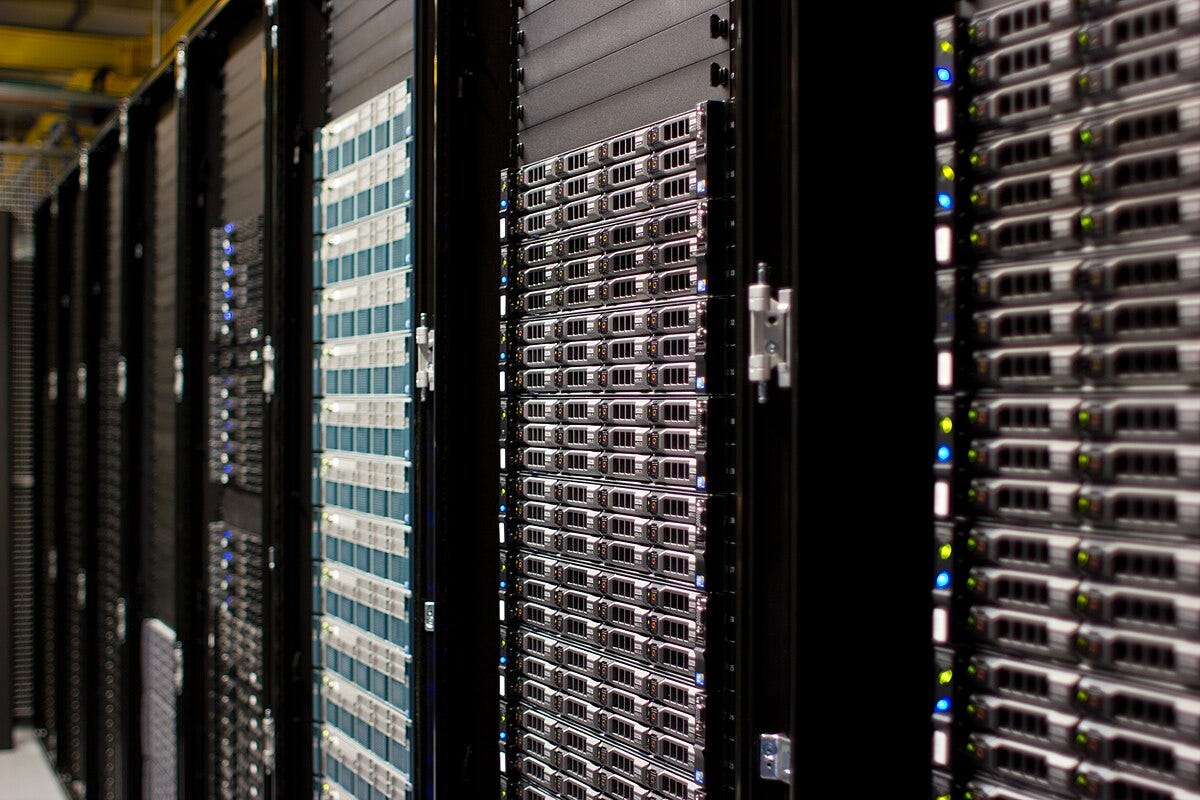Gregg Hoffmann: AI An Energy Hog
The AI hog is pigging out already and will be eating up even more energy soon.
AI is considered a key to the future but it also is an energy hog.
In 2018, about 2% of all energy consumption in the United States was attributed to data centers. By 2023, that percentage had more than doubled to 4.4%. By 2028, it’s expected that 7% to 12% of all U.S. energy consumption will go to data centers, many of which are AI.
UW-Madison’s Wisconsin Energy Institute recently hosted a discussion on this topic, which highlighted the soaring energy requirements linked to increased reliance on artificial intelligence.
At the discussion, Prof. Mat Sinclair, an assistant professor of computer sciences at UW-Madison, pointed to the “exponential growth” in the size of AI models and said, “Because of that, we just can’t really run these workloads on any one computer. So we’re increasingly splitting them to run across more and more computers in parallel to answer these really complex questions. This has had huge implications on energy.”
In Wisconsin alone, Microsoft plans a $3 billion AI facility in Mount Pleasant and a 2,000-acre project in Port Washington. Microsoft also recently acquired land for a smaller data center cluster in Kenosha.
Google and others have proposed making more efficient computers to reduce energy needs, such as specialized “accelerators” designed to handle AI processing, Cooperatives have entered the process.
Few business people want to do anything to discourage AI but some do acknowledge the huge impact it will have on energy demand. Amy Barrilleaux, communications director for Clean Wisconsin, noted Microsoft’s installation will be the state’s largest electricity user when completed, with a power need equivalent to 300,000 homes. She compared that to adding an entire city’s worth of energy needs to the state over the next few years.
Barrilleaux added We Energies recently announced plans for a $2 billion natural gas plant project, tying it to the Microsoft project’s projected energy needs. The natural gas project has yet to be approved by the PSC, she said.
She argued the utility company “doesn’t have a history of being a leader” on clean energy, with less than 3% of its energy mix currently coming from wind and solar.
In an emailed comment on Barrilleaux’s remarks, a spokesperson for WEC Energy Group pointed to the company’s plans to “transform our power generation fleet” with a balanced mix of wind, solar, energy storage and natural gas.
“Our proposed natural gas generating facilities are an important step to ensure reliability for our customers during the transition to a cleaner energy future in Wisconsin,” the spokesperson said. “Now more than ever — it is critical for us to have quick-start gas plants available and running when the wind doesn’t blow and the sun doesn’t shine.”
These plants will help the company meet “robust demand” along the I-94 corridor, the spokesperson said, noting they’re compliant with the grid operator’s reliability rules and help meet the need for more flexible energy resources. WEC Energy Group has also reduced emissions from electricity generation 54% from 2005 levels, and is investing $9 billion in new renewable energy by 2029.
Costa Samaras, director of the Scott Institute for Energy Innovation at Carnegie Mellon University, noted about 20% of electricity demand growth over the next 15 years is coming from AI and data centers. That’s more than buildings and industry, 15% each, but less than half that of cars, making up about half of the projected demand growth.
“We have to figure out how to manage the data center electricity challenge, because that’s the small part of the electrification challenge,” Samaras said. “And if we can’t figure out that without increasing emissions, we’ve got no chance on cars, buildings and factories.”
President Donald Trump has suggested coal can help meet surging electricity demand from manufacturing and the massive data centers needed for artificial intelligence. “Nothing can destroy coal. Not the weather, not a bomb — nothing," Trump told the World Economic Forum in Davos, Switzerland, by video link. “And we have more coal than anybody.”
Yet energy experts say any bump for coal under Trump is likely to be temporary since natural gas is cheaper and there’s a durable market for renewable energy no matter who holds the White House.
Nuclear energy, once considered virtually dead, has drawn more and more attention in recent years. The Press Democrat of Santa Rosa, CA, did a story on Jan. 30, “Artificial intelligence is bringing nuclear power back from the dead — maybe even in California.”
“Artificial intelligence is so wasteful, in fact, that its rapid spread could endanger California’s goal of eliminating all carbon emissions by 2045 — even as AI companies may be flooding the state treasury with tax revenue,” the Press Democrat reported, “The conundrum has legislators considering what was once unthinkable: Bringing back nuclear power as a driver of innovation and economic growth, sort of like it was the 1960s all over again.”
Smaller, mobile nuclear energy generators have been discussed in Wisconsin, by Dairyland Power and other utilities.
A Chinese company, DeepSeek, unveiled a powerful AI model it said was produced with a fraction of the resources used by its American rivals. The accuracy of those claims, and how DeepSeek might change industry practices, are hotly debated.
What is likely long term is a combination of more efficient AI processors, continued natural gas and fossil fuels to generate electricity, possible safer nuclear energy and sustainable energy from wind, solar and other sources.
The thing is: long term can’t be too long. The AI hog is pigging out already and will be eating up even more energy soon. The challenge is to feed that hog without doing further damage to the environment and going backwards on climate change efforts.




